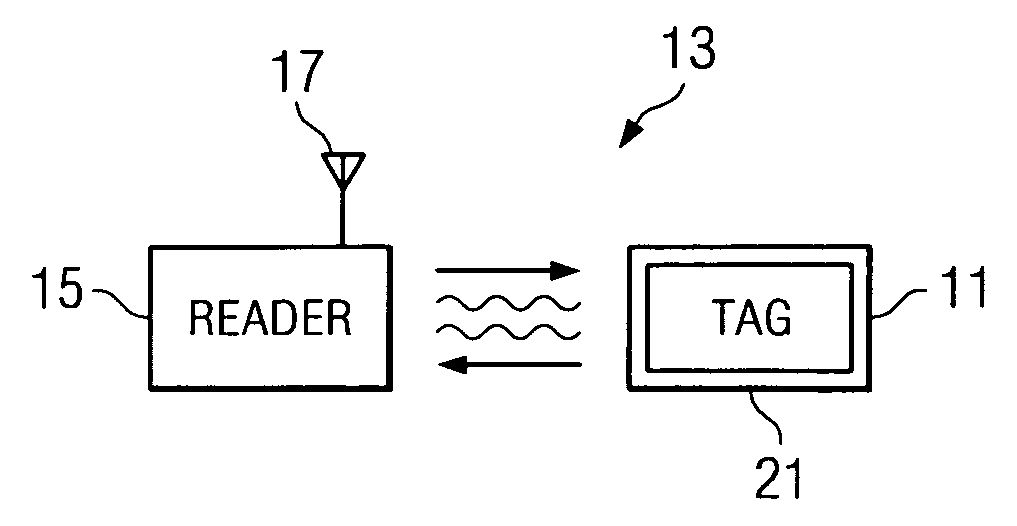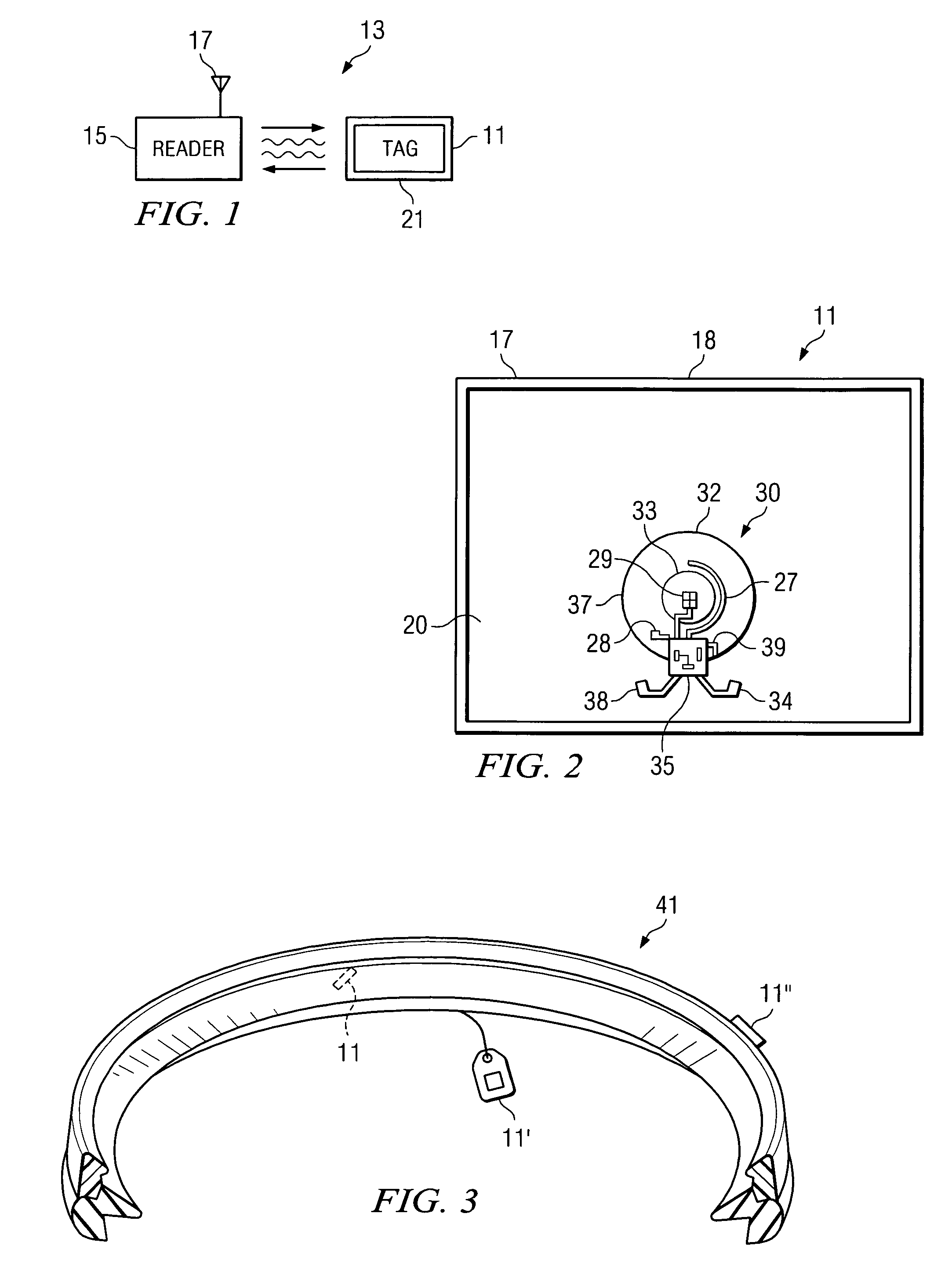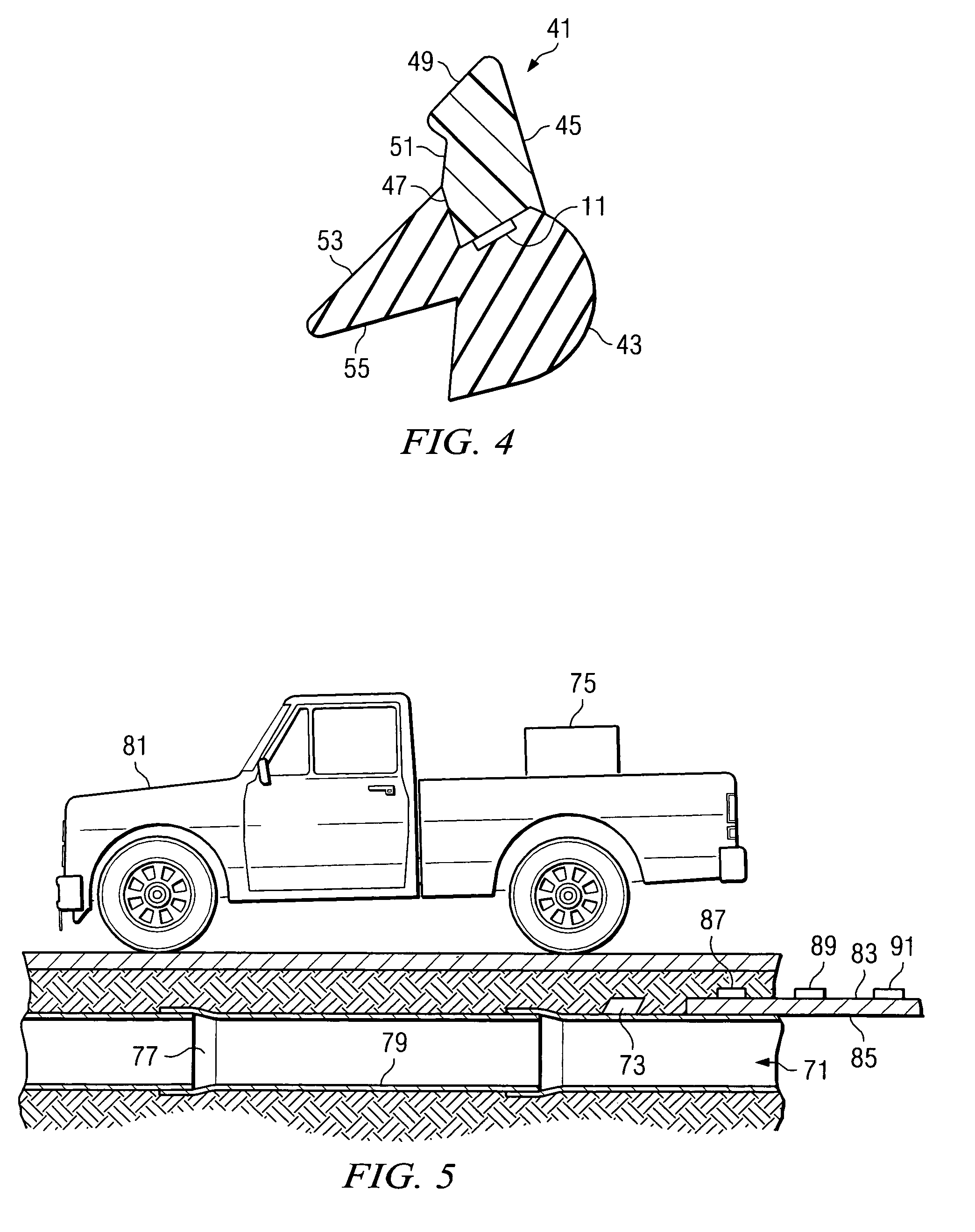Method of locating pipelines using RFID technology
a pipeline and locating technology, applied in the field of locating pipelines using rfid technology, can solve the problems of unsatisfactory solution, other obstacles and obstacles to accurate machine identification, identification schemes which relay upon reading bar codes or other optical indicia are not well suited for use in the sorting of flat goods rather than contoured items, etc., to eliminate erroneous digging or damage to the pipe, and the effect of quick and easy determination
- Summary
- Abstract
- Description
- Claims
- Application Information
AI Technical Summary
Benefits of technology
Problems solved by technology
Method used
Image
Examples
Embodiment Construction
[0027]The system of the invention uses wireless radio frequency identification devices (RFID's) to mark, track and identify items of interest, such as the sealing gaskets used in fluid conveyance systems including municipal water and sewer lines. The system also allows a user to quickly and easily determine the location of a hidden pipeline, such as an underground pipeline.
[0028]RFID technology will first be described in general terms before turning to the more specific end applications of the invention. Whereas RFID's were, in the past, cost prohibitive, such devices can now be purchased commercially for on the order of 20 to 30 cents apiece, making them suitable for the purposes of the present invention. RFID tags are now well-known and typically include an integrated circuit (IC) that is operatively coupled to an antenna (the tag antenna). The tag may also have a battery, or it may have no battery and may instead obtain energy from an external reader. RFID tags without batteries ...
PUM
 Login to View More
Login to View More Abstract
Description
Claims
Application Information
 Login to View More
Login to View More - R&D
- Intellectual Property
- Life Sciences
- Materials
- Tech Scout
- Unparalleled Data Quality
- Higher Quality Content
- 60% Fewer Hallucinations
Browse by: Latest US Patents, China's latest patents, Technical Efficacy Thesaurus, Application Domain, Technology Topic, Popular Technical Reports.
© 2025 PatSnap. All rights reserved.Legal|Privacy policy|Modern Slavery Act Transparency Statement|Sitemap|About US| Contact US: help@patsnap.com



